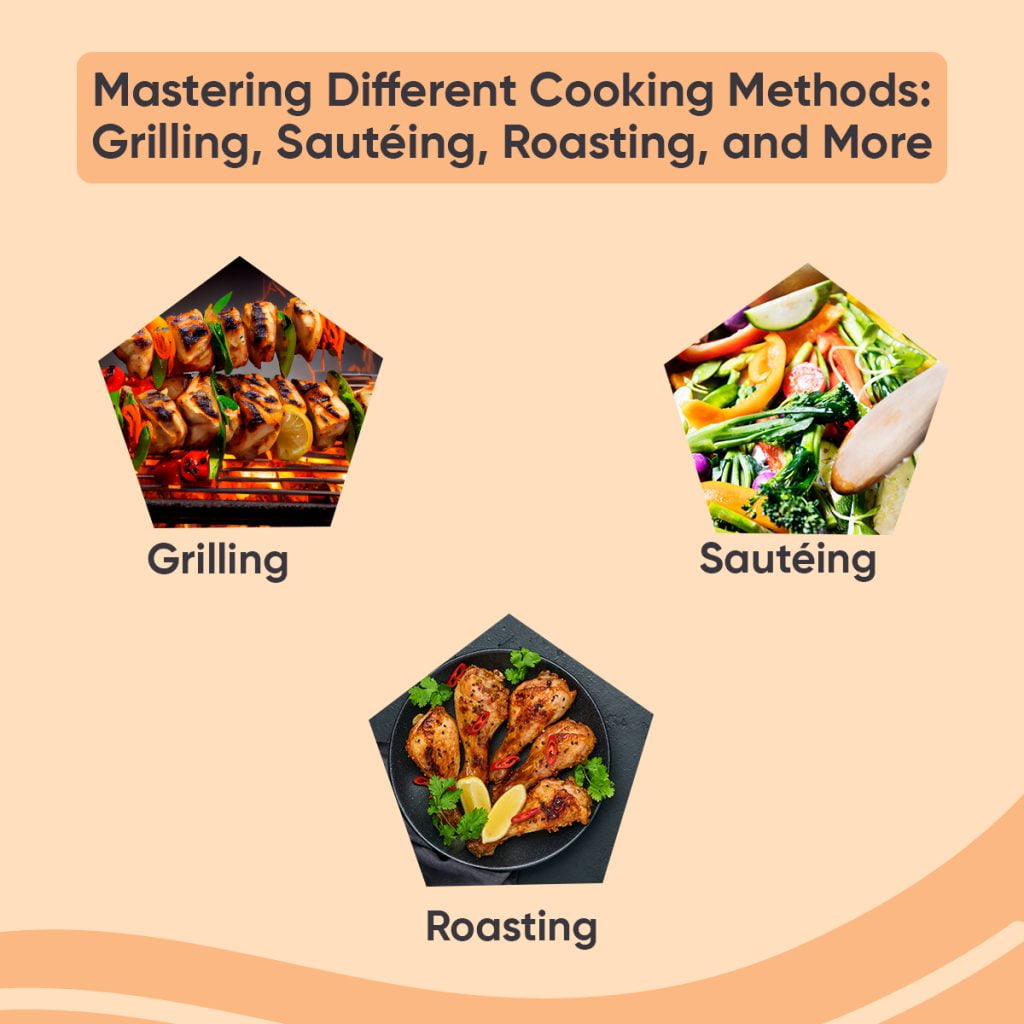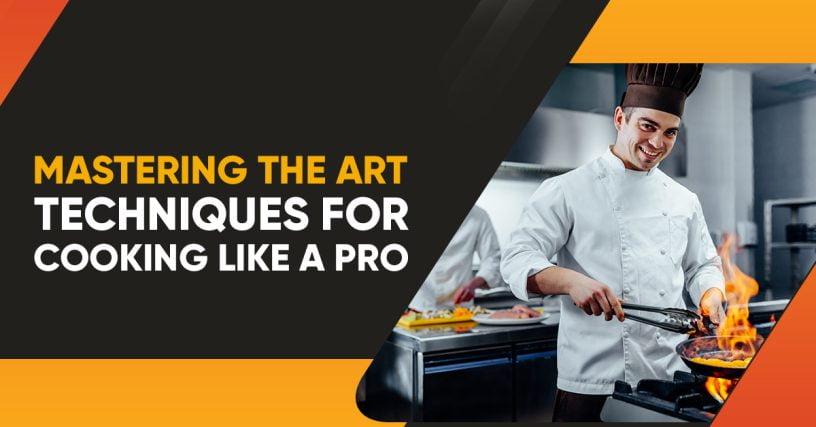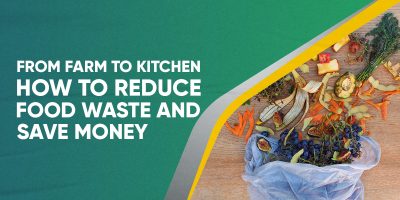In this article, we will dive deep into the essential techniques for cooking that will take your culinary skills to the next level. We will explore the science behind cooking, the different cooking methods, and how to properly season and flavor your dishes. By the end of this article, you will have the skills and confidence to cook like a pro and impress your guests with your culinary creations.
Table of contents
- Understanding the Science Behind Cooking: Heat Transfer, Food Chemistry, and More
- Kitchen Tools and Accessories:
- Types of Knives and Proper Techniques for Chopping and Slicing
- Proper Techniques for Chopping and Slicing:
- Mastering Different Cooking Methods: Grilling, Sautéing, Roasting, and More
- Perfecting Sauces, Stocks, and Marinades: Techniques for Creating Flavorful Components
- Seasoning and Flavoring: Balancing Flavors and Adjusting Seasonings for Perfect Taste
- Final Verdict
Estimated reading time: 9 minutes
Cooking is a wonderful combination of science and art. Whether you are an experienced cook or just starting, there are always new techniques to learn to take your skills to the next level. With the right techniques, you can create delicious and impressive meals that will have your family and friends asking for seconds.
Mastering cooking techniques is essential to becoming a pro in the kitchen. It’s not just about following recipes, but rather understanding the science behind cooking and developing an intuition for the right methods to use. Techniques like proper knife skills, understanding different cooking methods, and seasoning and flavoring dishes are all crucial to becoming a great cook.
Understanding the Science Behind Cooking: Heat Transfer, Food Chemistry, and More
Cooking is more than just following recipes; it involves an understanding of the science behind the cooking process. By understanding heat transfer and food chemistry, you can improve your cooking techniques and create better meals.
Heat Transfer:
Heat transfer is a fundamental principle of cooking. It is transferred from the heat source to the food, causing it to cook. There are different methods of heat transfer, such as conduction, convection, and radiation. Each method has its unique properties, and understanding them can help you control the temperature and cooking time of your food.
For example, using a cast iron skillet for searing meat provides excellent heat conduction. The pan gets hot quickly and evenly, allowing for a good sear. In contrast, a glass baking dish is not a good conductor of heat, so it takes longer to heat up, and the heat is not distributed evenly.
Food Chemistry:
Understanding food chemistry can help you create better meals by knowing how different ingredients interact with each other. For example, using an acid like lemon juice or vinegar can tenderize meats and bring out their flavor.
Another example is the use of baking powder in baked goods. Baking powder is a chemical leavening agent that reacts with liquids and heat to create gas bubbles, making baked goods rise.
Kitchen Tools and Accessories:
To fully utilize the science behind cooking, it’s essential to have the right tools and accessories. For example,
- Instant-read thermometer can help you monitor the temperature of your meat accurately.
- Kitchen scale can ensure you measure ingredients accurately, which is especially important for baking.
- Sous vide machine can help you control the temperature precisely and cook meat or vegetables to perfection. Besides you need to give priority to the small tools also.
To fully utilize the science behind cooking, it’s essential to have the right tools and accessories. For example
- Multifunctional egg beater with food clip can help you beat eggs, mix ingredients, and even serve food. This versatile tool is a must-have in any kitchen.
- Multifunctional scoop long handle with clip can make cooking and serving food a breeze. This tool is perfect for scooping out ingredients and even comes with a clip to keep the bag sealed.
- Vegetable washing dehydration drain basket. This basket allows you to wash and dry your vegetables easily and efficiently. The basket also doubles as a strainer for pasta and other foods.
- Microwaveable oil-proof cover can help you keep your microwave clean while reheating food. The cover prevents oil and other food particles from splattering and sticking to the microwave walls.
By having these tools and accessories, you can make cooking more efficient and enjoyable, while also creating delicious and perfectly cooked meals.
Types of Knives and Proper Techniques for Chopping and Slicing
A chef’s knife is one of the most essential tools in any kitchen. However, there are many different types of knives available, each designed for specific tasks. To become a skilled chef, it’s crucial to understand the various types of knives and how to use them properly.
Types of Knives:
- Chef’s Knife: This is the most versatile knife in the kitchen. It is used for a variety of tasks such as chopping, slicing, and dicing.
- Paring Knife: A small, lightweight knife used for intricate tasks such as peeling and trimming.
- Bread Knife: A serrated knife used to cut through bread without crushing it.
- Utility Knife: A medium-sized knife that can be used for a variety of tasks. Such as slicing cheese, trimming meats, and cutting vegetables.
Proper Techniques for Chopping and Slicing:
- Grip the knife handle firmly with your dominant hand and rest the other hand on the item to be chopped or sliced.
- Use a rocking motion when chopping with a chef’s knife. Hold the handle with one hand and use the other hand to guide the blade back and forth over the item.
- For slicing, use a smooth back-and-forth motion with a long blade such as a chef’s knife or utility knife.
- For delicate tasks such as peeling, use a paring knife with a gentle sawing motion.
- Keep the blade sharp to ensure clean cuts and to prevent accidents.
To achieve precise cuts and maintain the sharpness of your knives, consider investing in high-quality sharpeners and cutting boards.

Mastering Different Cooking Methods: Grilling, Sautéing, Roasting, and More

Cooking is an art that involves using different techniques and methods to create delicious and flavorful meals. Whether you’re an experienced chef or just starting out, mastering various cooking methods can take your culinary skills to the next level. In this section, we’ll explore some of the most popular cooking methods, including grilling, sautéing, roasting, and more.
Grilling:
Grilling is a popular cooking method that involves cooking food over an open flame or on a hot surface, such as a grill pan. It’s a great way to add flavor to meat, poultry, fish, and vegetables.
Sautéing:
Sautéing involves cooking food quickly over high heat in a small amount of oil or butter. It’s a versatile cooking method that can be used for vegetables, meats, and seafood.
The key to sautéing is to keep the ingredients moving in the pan to prevent burning.
Roasting:
Roasting involves cooking food in the oven at a high temperature, usually above 400°F. It’s a great way to cook meats, poultry, and vegetables, as it allows the natural flavors and juices to develop.
Other Cooking Methods:
Other popular cooking methods include braising, steaming, and stir-frying. Braising involves cooking food slowly in a liquid, such as broth or wine. Steaming involves cooking food over boiling water. Stir-frying involves cooking food quickly over high heat in a wok or skillet.

Perfecting Sauces, Stocks, and Marinades: Techniques for Creating Flavorful Components
The Basics of Sauces:
A sauce is a liquid that is used to add flavor, moisture, and texture to a dish. There are different types of sauces, including white sauce, brown sauce, tomato sauce, and more. To create a sauce, you need to start with a flavorful base, like a stock or broth.
Then, you can add other ingredients such as herbs, spices, and aromatics to build up the flavor.
The Importance of Stocks:
Stocks are the foundation of many sauces and soups. A good stock can add richness, depth, and complexity to a dish. There are different types of stocks, including chicken stock, beef stock, and vegetable stock.
To make a stock, you need to simmer bones, vegetables, and aromatics in water for several hours.
Marinades:
Marinades are a mixture of liquids, herbs, spices, and aromatics that are used to flavor and tenderize meat, poultry, and seafood. A good marinade can infuse your dish with flavor and make it more tender.
Seasoning and Flavoring: Balancing Flavors and Adjusting Seasonings for Perfect Taste
Seasoning and Flavoring are crucial aspects of cooking that can make or break a dish. It’s essential to know how to balance flavors and adjust seasonings to achieve the perfect taste.
To start, you need to have the right tools, such as measuring spoons and a quality salt and pepper grinder.
Next, it’s important to understand the different types of seasonings and how to use them. Herbs, spices, and aromatics can add depth and complexity to your dishes. You can also experiment with different flavor profiles, such as sweet, sour, salty, and umami, to create a well-balanced dish.
When it comes to adjusting seasonings, it’s best to start with small amounts and taste as you go. The goal is to enhance the natural flavors of the ingredients, not overpower them. Additionally, you can use acids, such as lemon juice or vinegar, to brighten up a dish or balance out sweetness.
By mastering the art of seasoning and flavoring, you can elevate your cooking to new heights and impress your guests with delicious, well-balanced dishes.
Final Verdict
Mastering techniques for cooking is essential for anyone looking to improve their culinary skills and create delicious, well-balanced dishes. From understanding the science behind cooking to perfecting different cooking methods and creating flavorful components, every aspect of cooking plays a vital role in the final dish.
By utilizing the proper tools and techniques, such as using the right knives, grilling, sautéing, and roasting with precision, and creating sauces, stocks, and marinades with the right balance of flavors, you can take your cooking to new heights.
Remember to also focus on seasoning and flavoring, using the right amount of herbs, spices, and aromatics, and adjusting the seasonings to achieve the perfect taste.
With the right knowledge, skills, and tools, anyone can become a pro in the kitchen. So, take your time, practice, and have fun experimenting with different techniques for cooking!
Read More:





